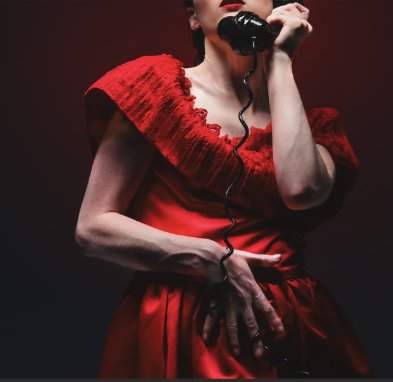
Dial M for Murder
Click here if you liked this article 12 ![]()
https://www.theatreworks.org.au/2025/dial-m-for-murder
Date Reviewed: 09/08/2025
Theatre Works plunges St Kilda into a world of silk, shadows, and sharp wits with its long-awaited staging of Dial M for Murder.
After a five-year pandemic delay, director Dean Drieberg and Smoke and Mirrors Productions finally deliver this reimagining of playwright Frederick Knott’s classic, one that honours the original while letting it breathe into 2025, proving that betrayal and greed age no better than love.
It’s a bold move. Mention Dial M for Murder and most people instantly picture the 1954 Alfred Hitchcock film: Grace Kelly in pearl earrings, Ray Milland’s sly smile, and the perfect crime unfolding like a chess match.
Hitchcock, as the “Master of Suspense”, could wrap claustrophobic menace around a single room until it felt like the walls are caving in. In the case of this work, Knott’s play had already dazzled audiences with 425 performances in its 1952 London premiere, 552 on Broadway that same year, before Hitchcock immortalised it on screen. It has since been staged in countless professional, community, and school productions across seven decades.
Drieberg’s production begins in the 1950s: traditional, buttoned-up, almost imitative of Hitchcock’s visual style. The first half plays it straight, giving Knott’s dialogue space to purr and bite. Bridget Bourke (Margot Wendice) is magnetic from her first entrance, glamour edged with fragility. Grace Kelly would approve. Her performance anchors the production, no small feat when the audience already knows she’s marked for death by her husband’s hand. Tyrie Aspinall’s Tony Wendice has the precision of a man who could charm you and rob you blind in the same breath, though at times the charm tips into theatrical flourish. Leon Walshe’s Max Halliday simmers with quiet warmth, while Joshua Bruce is a sly revelation, his Captain Lesgate and Inspector Hubbard are so distinct you blink twice to believe they’re played by the same actor.
The murder scene is the hinge: shadow and light coiling together in a dance of death, beautiful and brutal. And then, Drieberg’s boldest stroke, time starts to move. Act by act, the decades shift: from the smoky ’50s to the neon-slick ’80s, then to the pared-down minimalism of now. Betty Auhl’s set and costume design traces that evolution in subtle, clever ways: the phones shrink, fabrics sharpen, furniture thins. Dean Drieberg's 80s-inspired synth score, a sly nod to Bernard Herrmann, stitches the eras together while keeping the tension on a low, insistent simmer.
Between acts, scene changes become their own performance: the male cast dressing Margot like a doll, the set morphing around her, the arc of women’s rights rising and falling with each new era. It’s a slow burn with teeth, a reminder that manipulation, control, and intimate partner violence don’t vanish with changing fashions.
Yes, it’s a talky play. That’s the pleasure. The slow click of the trap being set. The inevitable human error that loosens it. The final snap, executed with wit and elegance concealing a blade. The story endures because human darkness does.
Producer Josh Sanders puts it plainly: “Why this work? Why now? Theatre needs to be relevant and have something to say.” Here, the relevance lies in words, crisp, clever, unhurried. In an age of AI and flickering screens, the art of a perfectly weighted line feels almost radical.
This Dial M for Murder isn’t just a nostalgia trip. It’s a reminder that live theatre can still grip your throat and hold you there, no matter how many times you’ve heard the story.
Highlights
- The murder scene, choreographed shadow and breath
- Dean Drieberg's between-acts synth score, slyly retro and sharp
- The dressing of Margot by the three male cast members, draw your own conclusions
- Knott's wit, especially in the scene where Max tells Tony how to free Margot by 'fabricating' the cover-up he has already committed.
Who is it for?
Fans of Hitchcock. Lovers of a perfectly wound thriller. Those who savour language as much as plot. Drama buffs, true crime addicts, couples who whisper theories in the dark. Perfect for anyone who thinks they know how it ends — and wants to watch it happen anyway.
Fun facts
- Hitchcock’s 1954 film was originally shot in 3D, though most audiences saw it “flat.”
- Frederick Knott was famously reluctant to write more plays; Dial M was his first, and only three reached Broadway.
- The original Broadway production starred Anthony Dawson, who later appeared in Hitchcock’s Dial M for Murder film as the doomed Captain Lesgate.
Reviewed by Mary Sinanidis